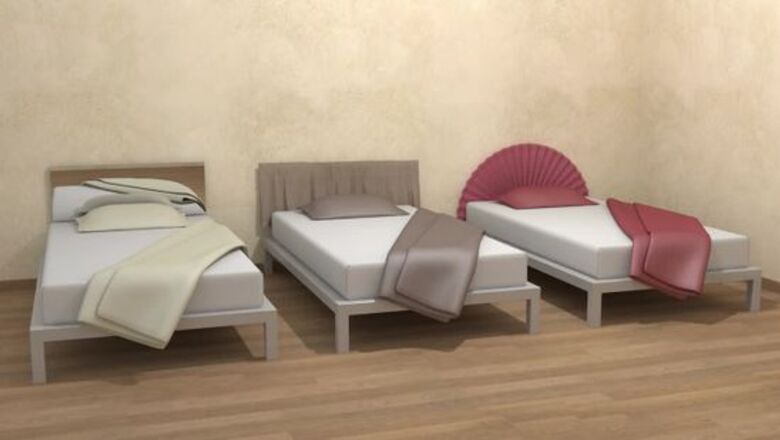
views
Getting Your Materials Together
Choose the wood that you'll use for the base of the headboard. Most headboards are constructed out of wood, so your first step is going to be finding a large-enough piece of wood that you can fashion into a headboard. Check your bed to see that the candidate is at least as wide as your bed; headboards that are flush with the width of the bed look best. Here are some ideas about wood that you can use: Any piece of plywood. There's no need to break the bank if you're just going to cover it anyway. An old or new door. If buying a new door, look for a hollow-core door, as they are cheaper and less heavy. A piece of metal. Perhaps some corrugated tin roofing could be cut into an elegant pattern? Some rehabbed shutters. Adds texture and, if the shutters are in the right condition, an homey vintage look. Some chalkboard. Perfect for those who like to write and doodle, this gives a whole new meaning to the phrase "playing in bed."
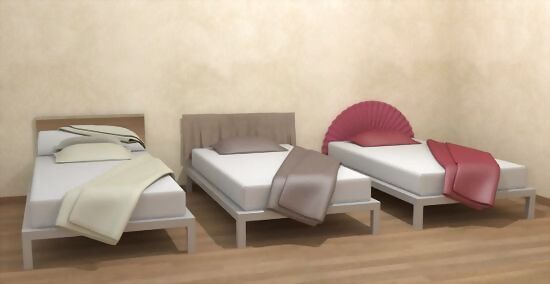
Create a faux headboard if you don't have the right kind of materials. Who said a headboard needed to be a plank of wood, filled with batting, and covered with fabric? A headboard can be so many things, even if they aren't true headboard. Use your imagination: Paint out or make a decal for your headboard. This won't actually give you a headboard, but you can do a lot with just a little. Use a piece of architectural salvage to hang above your bed. A piece of antique wood salvage can brighten up your room just like a headboard. Cut out fabric in the shape of a headboard. Again, no real board to speak of, but the same great headboard effect. Turn a mirror or big painting into a headboard. Mirrors are great for enlarging the feel of the room, while paintings show off your artistic sense. Either can make a suitable headboard.
Cut the wood or other headboard material into the dimensions that match your bed. While some headboards can be larger than the width of the bed, most headboards line up exactly as wide as the bed is. Figure out how wide your bed is and mark those measurements onto the headboard material. Cut the material accordingly. If you're buying plywood or a door from a retail store, you might be able to have the store cut the wood for you if you already know the dimensions. Large retail stores like Lowe's or Home Depot provide this service for free, as might smaller mom & pop stores. Remember to be cautious with your cutting. You can always cut more off, but you can never add more on. If you're not sure how big you want your headboard to be in the beginning, cut off a little first, and then more if necessary.
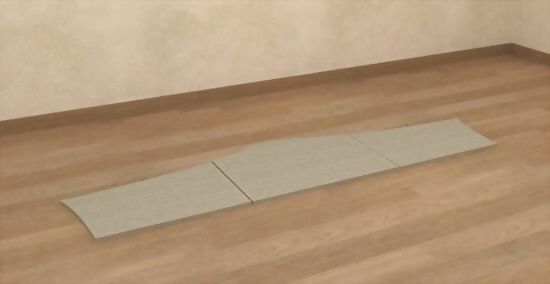
Cut padding for the headboard. You ideally want your headboard to be soft and giving, not hard as a rock. In order to get this softness under your headboard, you're going to need a bit of padding. Drape your padding over the headboard and trace an outline around the edges of the headboard. Cut it so that it fits perfectly over the headboard. Foam can be used but may be expensive. Since foam is petroleum-based, its price fluctuates along with the price of gas. Use egg crate mattress topper for a cheap alternative to foam. Egg crate mattress topper should cost less than $20. Two egg crate mattress toppers laid in on one another make a smooth surface. Polyester padding can also be used. For a little bit extra, polyester padding has springiness and give, making a great batting material.

Cut the batting so that it's slightly bigger than the outline of your headboard. Since you're going to staple the batting onto the back of the headboard, you want it to be big enough to reach behind the headboard.
Assembling Your Headboard
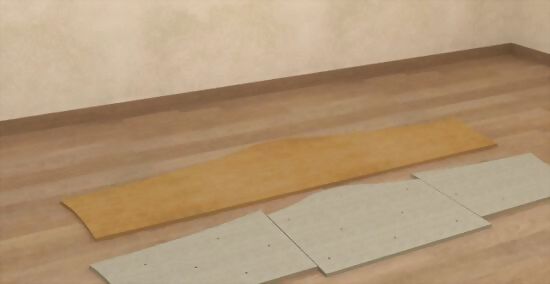
If you're making a tufted headboard, drill your holes first. Tufted headboards add marvelous texture and look, especially if the fabric you're using on the headboard is monochrome. For now, drill ⁄4 inch (0.6 cm) holes into the headboard, all the way through the material. Your buttons, which will give you the tufted look, will eventually fit into these holes. You can use several different patterns when drilling your holes. Your tufts can be evenly spaced above and below one another, in a grid pattern, or they can be spaced out on a diagonal. Choose whichever pattern suits you the best.
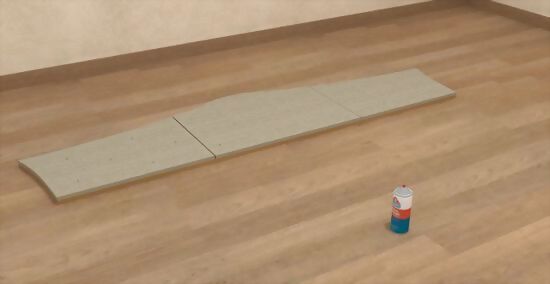
Use a spray fixative to attach the padding to the back of the headboard. Make sure that the fixative you use actually works with the padding you've purchased. Fixative is both very sticky and quite toxic, so make sure you only spray it onto the padding and use a mask when spraying. (Opening any windows is a great idea; working in an open garage might be an even better one.)
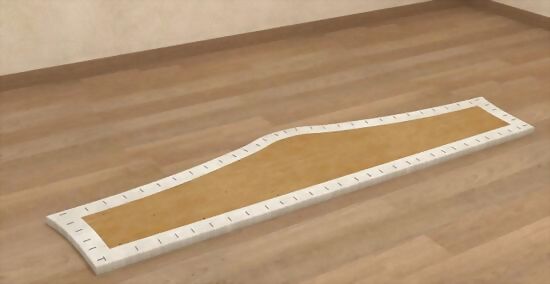
Pull the batting taut over the padding on the front of the headboard and staple it onto the back of the headboard. A manual or electric staple gun will work just fine here.
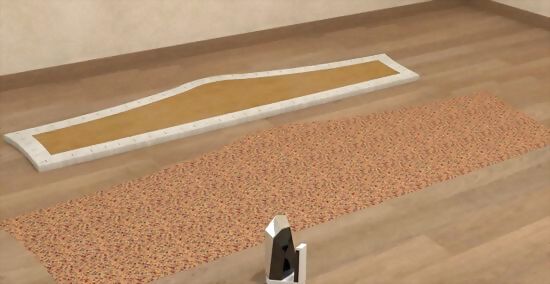
Iron any wrinkles out of your headboard fabric. Hit the fabric with a little bit of steam before you drape it over your headboard. Many people forget to do this, giving the fabric less of a professional look. Once you're done, lay your fabric face down on the floor and place your batted headboard on top of it, batting-side down.
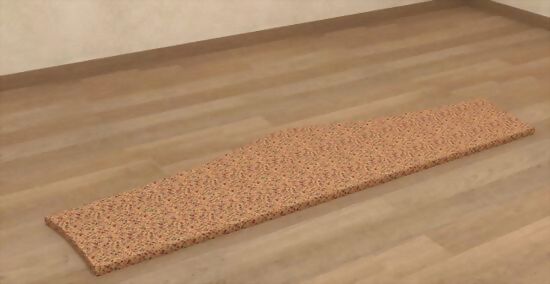
Line up the pattern of the fabric with the headboard and begin stapling the fabric down to the back of the headboard. This is a crucial step, so don't be afraid to take your time here in order to get it right. A couple things for you to remember as you staple the fabric to the headboard: Use clamps or vices to get the pattern of the fabric lined up with the center of the headboard. Staple one or two times, and then check to see if the pattern looks good by turning the headboard over. Be sure to get the fabric as taut as possible. Staple well and staple often. Since no one will be able to see the staples on the back side of the headboard, you can go a little crazy here. (Well, don't go crazy, but more is definitely better than not enough!) Take care around corners and rounded parts. Be sure to pull the fabric taut, especially over rounded parts and edges.
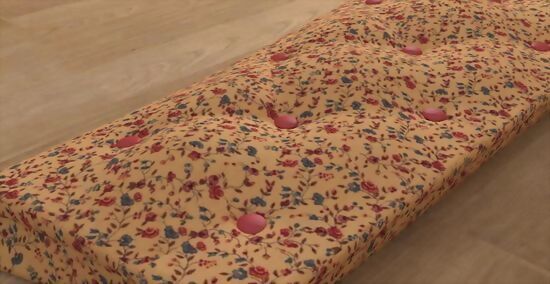
Feed your buttons through the holes for a tufted look. On the back of the headboard, slide a long needle through the various holes for the buttons. On the other side of the headboard, locate the needle. Attach the buttons to sturdy, thick string, and attach the string to another needle. Using the first needle as a guide, feed the strung needle back into the hole in the headboard. Pull button taut to create tufts; staple the string to the back of the headboard several times, until it is secure.
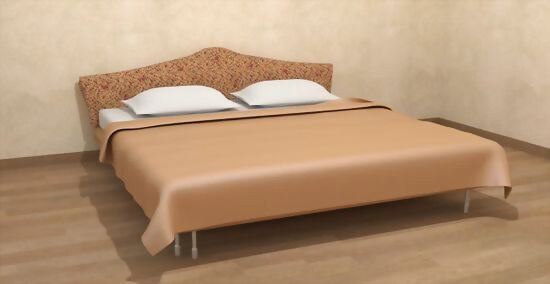
Attach the headboard to your wall. You're almost done now. There are several ways that you can attach a headboard to the wall. Here are a few of your options: Slide the headboard between the bed and the wall and let the two prop the headboard up. So no construction required; simple and safe if your headboard extends all the way down to the floor. Use a headboard hanger. These come in two long, flat pieces of metal, each with a protruding groove. Attach one piece to the wall, another piece to the back of the headboard. The two protruding grooves fit perfectly in one another, keeping the headboard safely propped up. Use flush mount hangers. Less sturdy than headboard hangers, but much less expensive, these flush mount hangers have teeth that fit into their bases on the wall. Instead of a long, flat bar, these are small pieces of metal.















Comments
0 comment